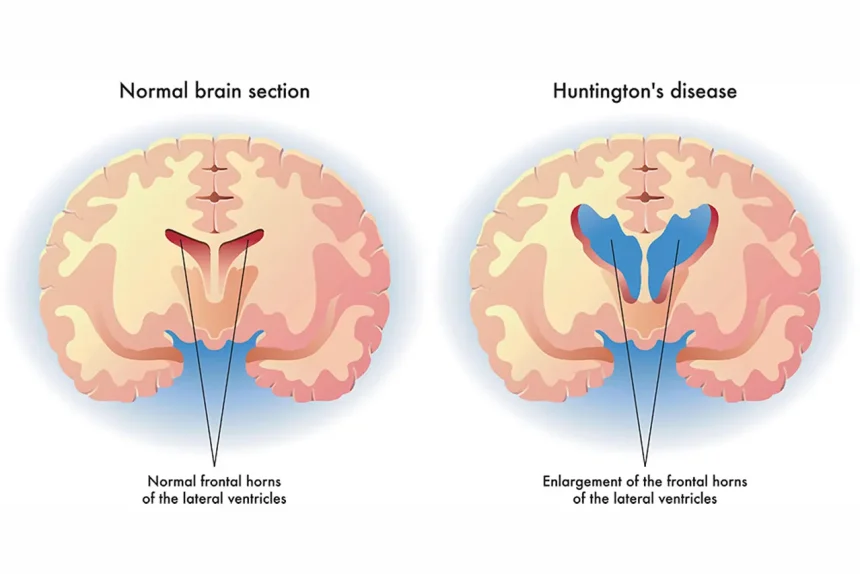Huntington’s Disease: Symptoms and Progression
Huntington’s Disease is a genetic and fatal neurological disorder. The typical onset age is between 30 and 50 years, with life expectancy ranging from 10 to 25 years post-symptom onset. The disease’s progression affects motor control, cognition, and psychological state.
Is Huntington’s Disease Fatal?
Yes, Huntington’s Disease is fatal and currently has no cure. Death typically results from complications such as heart failure, pneumonia, or suicide.
What is the First Sign of Huntington’s Disease?
The first sign is often minor involuntary movements called chorea. Patients may also experience subtle coordination loss, cognitive decline, or psychiatric changes, including depression or irritability.
Stages of Huntington’s Disease
Early Stage
Individuals remain functional; they can drive, handle finances, and live independently. Symptoms like chorea and cognitive difficulty begin to surface.
Middle Stage
The ability to manage daily activities independently declines. Patients often need help with tasks like driving and household management but can still eat and dress with assistance.
Late Stage
Complete assistance is required for all daily activities. Severe chorea becomes rigidity, or bradykinesia, making communication and mobility challenging.
Huntington’s Disease Symptoms
- Motor Symptoms: Chorea, dystonia, dysarthria, dysphagia, impaired balance.
- Cognitive Symptoms: Executive function loss, difficulty multitasking, impaired impulse control.
- Psychiatric Symptoms: Depression, irritability, paranoia, hallucinations.
Huntington’s Disease Occupational Therapy
Occupational therapy plays a crucial role in managing Huntington’s Disease symptoms and improving quality of life. It focuses on adapting tasks to maintain patient independence for as long as possible.
Occupational Therapy Interventions for Huntington’s Disease
- Eating: Use adaptive utensils to enhance self-feeding. Work with speech therapists to modify food textures.
- Mobility: Remove home safety hazards, use adaptive equipment to prevent falls, and train patients in safe mobility methods.
- Cognitive Skills: Use planners and electronic alerts to assist with memory. Establish daily routines.
- Psychosocial Support: Educate families on maintaining a calm environment to reduce stress and irritability in patients.
Want detailed practice tips to ace the NBCOT® exam? Join now for full access!
What is Huntington's Disease and how does it progress?
Huntington’s Disease is a genetic and fatal neurological disorder that typically begins between ages 30 and 50. It progresses over 10 to 25 years, affecting motor control, cognition, and psychological health, leading to complete dependency in the late stage.
Is Huntington's Disease always fatal?
Yes, Huntington’s Disease is always fatal as there is currently no cure. Death often occurs due to complications such as heart failure, pneumonia, or suicide.
What are the early signs of Huntington's Disease?
The early signs of Huntington’s Disease are often minor involuntary movements known as chorea. Other early symptoms may include subtle loss of coordination, cognitive decline, or psychiatric changes like depression or irritability.
How can occupational therapy help with managing Huntington's Disease?
Occupational therapy can help manage Huntington’s Disease by adapting tasks to maintain independence. Interventions include using adaptive utensils for eating, ensuring home safety, enhancing cognitive skills with planners, and providing psychosocial support.
What are the main symptoms of Huntington's Disease?
The main symptoms of Huntington’s Disease include motor symptoms like chorea and dystonia, cognitive symptoms such as executive function loss, and psychiatric symptoms like depression and irritability.



